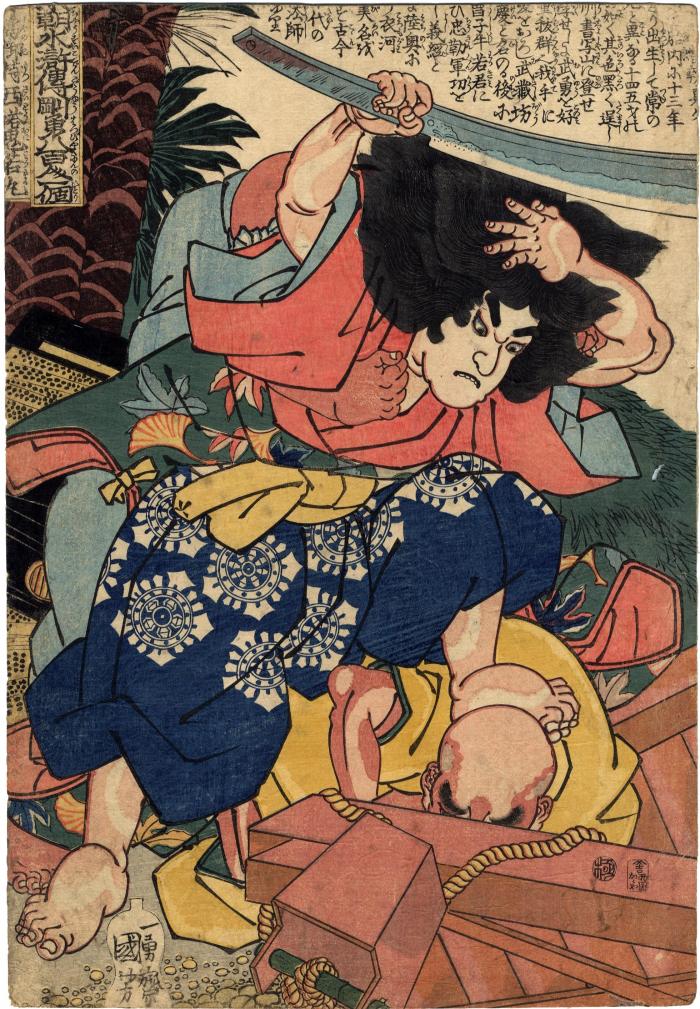Utagawa Kuniyoshi (歌川国芳) (artist 11/15/1797 – 03/05/1861)
Shosha Gomotsu Saitō Oniwakamaru (書寫御持西荅鬼若丸) from the series One of the Eight Hundred Heroes of the Water Margin of Japan (Honchō Suikoden gōyū happyakunin no hitori - 本朝水滸傳剛勇八百人一個)
ca 1830 – 1832
9.625 in x 14 in (Overall dimensions) Japanese woodblock print
Signed: Ichiyūsai Kuniyoshi ga
一勇斎国芳画
Publisher: Kagaya Kichiemon
(Marks 195 - seal 22-025)
Censor's seal: kiwame
British Museum
Museum of Fine Arts, Boston - a later edition published by Ibaya Senzaburō from ca. 1845
Museum of Fine Arts, Boston - a copy with the Kagaya Kichiemon publisher's seal, like this one in the Lyon Collection We know that there are at least two different editions of this print by two different publishers. The first edition by Kagaya Kichiemon is from ca. 1830-32 . That is what this print in the Lyon Collection is from as is the example in the British Museum. The second edition/publisher is by Ibaya Senzaburō from ca. 1845, like the one linked to above at the Museum of Fine Arts in Boston.
****
Oniwakamaru grew up to be the great Japanese hero Benkei, but before that... His early name meant 'demon child' and he was a bit hard to handle. He was extremely strong and violent. His mother was pregnant with him for three full years. Is it any wonder that he was born with a full head of hair and teeth and was naturally precocious.
At the age of 8 he was asked by the priests of Kaminokura to move a huge boulder. He did it easily. Because of that they took him into their program, but he turned out to be too difficult to handle. "As a result, they [sent] him to a more severe temple to be raised as a priest." Was this the temple at Shoshazan seen here? We'll figure this one out in time.
It was while he was being groomed for the priesthood at the second temple that he had his famous encounter with the giant carp. (See #479 by Sadahide.)
There is another Kuniyoshi print triptych in the Lyon Collection which relates to this one: #1239. It too shows a young Oniwakamaru acting out violently against his 'protectors'.
****
Illustrated in color in Ukiyo-e: The Art of the Japanese Print by Frederick Harris, Tuttle Publishing, 2010, p. 151. Notice that there are three figures involved in this struggle. One is barely visible behind our hero and the other one is prone under Oniwakamaru's left foot.
Kagaya Kichiemon (加賀屋吉右衛門) (publisher)
Suikoden (水滸傳) (genre)
Musashibō Benkei (武蔵坊弁慶) (role)
